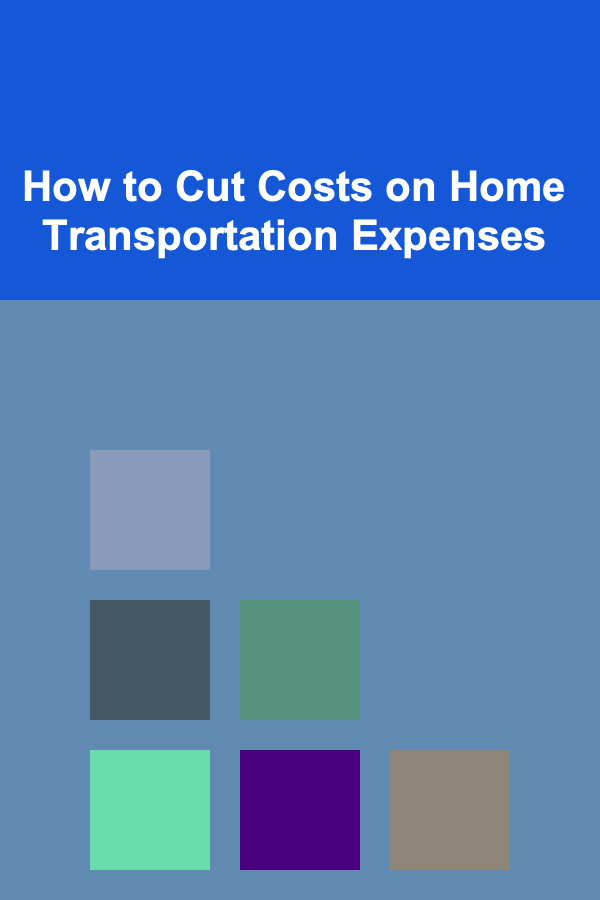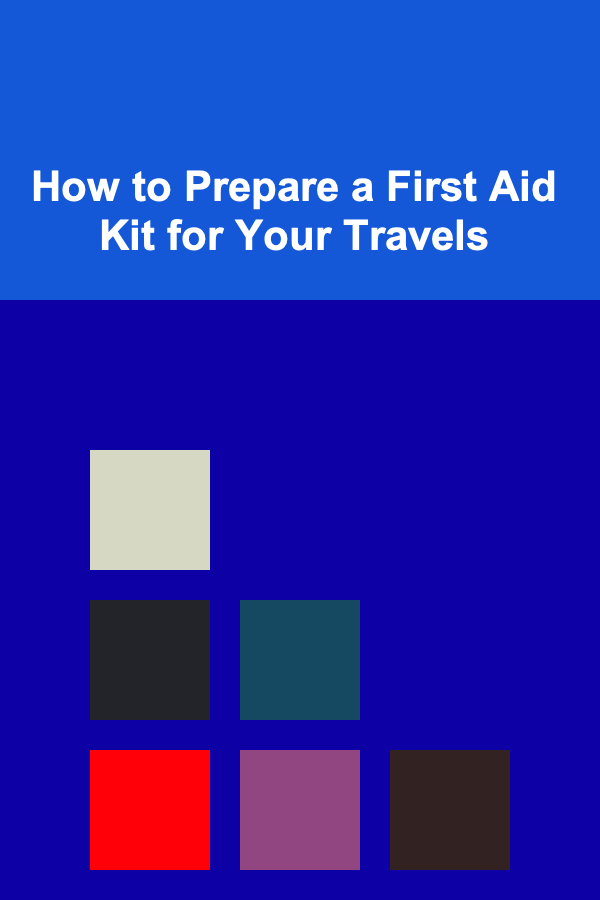
How to Plan Your Knitting Stash with a Dedicated Planner
ebook include PDF & Audio bundle (Micro Guide)
$12.99$5.99
Limited Time Offer! Order within the next:

As any avid knitter will tell you, managing a knitting stash can be both exciting and overwhelming. From endless skeins of yarn to various knitting projects in progress, it's easy to accumulate a significant amount of supplies over time. The sheer volume of options and the potential for impulse buys can leave you feeling disorganized or unsure of how to efficiently plan and use your stash.
One of the most effective ways to maintain control over your knitting supplies while maximizing your creativity and project success is through the use of a dedicated knitting planner. This tool can help you organize your stash, track your projects, and ensure that your purchases are thoughtful and purposeful.
In this article, we'll dive deep into how you can plan your knitting stash using a dedicated planner. We'll discuss the benefits of having a knitting planner, what to include in it, how to track your yarn, and how it can help improve your knitting experience.
Why You Need a Knitting Planner
1. Reduce Stash Overload
A common challenge for knitters is stash overload. The temptation to buy yarn during sales or based on beautiful colorways can quickly add up, leading to a stash that may be overwhelming to manage. A knitting planner can help you evaluate your current stash, track what you already have, and avoid purchasing yarns you don't need.
2. Better Project Planning
Having a well-planned knitting stash means you can work on projects more efficiently. Whether you're working on a blanket, sweater, or socks, having a visual representation of what you have on hand allows you to quickly identify materials and choose patterns that align with your current resources.
3. Minimize Waste
Sometimes, knitters buy yarn with grand ideas of creating a masterpiece, but those projects either don't happen or the yarn is left sitting unused. By planning out your stash and setting clear goals, you can minimize waste by ensuring that you use the yarns you've purchased, and avoid buying too much of any one kind.
4. Increased Creativity
A dedicated knitting planner can also help ignite creativity. By tracking patterns, yarn types, and project ideas, you can create an inspiration board within your planner. This can make it easier to visualize what you want to make and help you come up with fresh ideas as you work through your stash.
What to Include in a Knitting Planner
When planning your knitting stash, it's essential to organize your information in a way that makes it easy to reference. Here are key sections to include in your knitting planner to make the most of your stash management.
1. Yarn Inventory
The foundation of any knitting planner is a comprehensive yarn inventory. This section is where you track every skein of yarn in your collection. By recording the details of each yarn, you will have a clear view of what you own, which will help with project planning.
Here's what you should include in your yarn inventory:
- Yarn Name/Brand: The name of the yarn and the brand, which is helpful for finding additional skeins or matching colors later on.
- Fiber Content: Whether the yarn is made from wool, cotton, alpaca, or synthetic fibers, the fiber content is crucial for determining its suitability for different types of projects.
- Weight: Record whether the yarn is lace, fingering, sport, worsted, or bulky weight. This will help you select the appropriate pattern and project.
- Color: Document the yarn color or dye lot number, especially for multi-colored or hand-dyed yarns.
- Amount: Include the total amount of yarn you have (in yards or meters), and whether it's a full skein or partial skein.
- Purchased Date/Price: Tracking when and where you purchased the yarn can help you avoid buying more of the same yarn if you've already reached your desired amount.
2. Project Log
A knitting planner can serve as your personal project management tool. The project log section should contain details about the projects you're working on, or projects you plan to start in the future. This section can help you track project progress, yarn usage, and completion.
Include the following in your project log:
- Pattern Name: The name of the pattern you're following.
- Designer: If you're using a purchased or free pattern, include the designer's name so you can reference it later.
- Yarn Used: Write down the yarn(s) you're using for the project, including the amount you've used and how much is left.
- Start and End Dates: Track when you started the project and when you finished it (or when you plan to finish it).
- Project Notes: Add any helpful notes about the pattern, yarn, or techniques you used that could be beneficial for future projects.
- Challenges/Adjustments: Note any problems you encountered with the pattern or yarn, such as gauge issues or yarn shortages, and how you overcame them.
3. Wish List and Inspiration
The knitting world is full of inspiring projects, and a wish list section in your planner can help you keep track of patterns, yarns, and designs you'd like to try. This can act as a guide for future purchases or project planning. Include:
- Pattern Ideas: List patterns you're interested in making in the future.
- Yarn Goals: Identify specific yarns you want to try out (perhaps from your favorite dyers or brands).
- Design Features: Jot down design elements, such as stitch patterns, colorwork, or textures that you want to explore.
4. Budgeting and Tracking Yarn Spending
A dedicated knitting planner is an excellent tool for managing your knitting budget. The yarn industry can be expensive, and it's easy to go over budget when you're not tracking your purchases.
Your planner should include:
- Budget: Set a monthly or yearly yarn budget based on your income and financial goals. This helps you prioritize purchases and avoid impulsive buys.
- Purchase Tracker: Log each purchase in your planner, including the yarn name, price, and date. This will help you stay within budget and avoid over-purchasing.
- Financial Goals: If you have specific goals, like spending less on yarn or building a collection of certain yarn types, track your progress throughout the year.
5. Review and Reflection
Every few months, set aside time to reflect on your knitting progress, stash management, and financial goals. Ask yourself:
- How much of your stash have you used?
- Are there any yarns you no longer like or need?
- Did you stay within your yarn budget?
- Have you completed all the projects you planned?
Regular reviews can help you make adjustments to your plans and give you a sense of accomplishment.
How to Use Your Knitting Planner Effectively
1. Set Clear Goals
When planning your knitting stash, set specific goals for how much yarn you want to accumulate, how many projects you want to finish, and what types of knitting techniques you want to explore. These goals will guide your purchasing decisions and project planning.
2. Track Your Progress
Regularly update your planner with new yarn purchases, completed projects, and any changes in your stash. Tracking your progress ensures that you stay organized and focused on your knitting journey.
3. Be Realistic
While it's fun to dream about all the yarns and projects you want to tackle, be realistic about what you can accomplish in a given time frame. Avoid overloading your planner with projects or purchasing too much yarn.
4. Review Your Planner Regularly
Check in with your planner every few weeks or months to ensure you're on track with your knitting goals and that your stash is being used efficiently. This will help you maintain focus and avoid accumulating unnecessary yarn.
Conclusion
A dedicated knitting planner is more than just a tool for organization; it's an investment in your knitting experience. With careful planning and record-keeping, you can keep your stash under control, reduce waste, and improve your overall knitting efficiency. From managing your yarn inventory to planning projects and tracking expenses, a knitting planner helps you stay focused and inspired as you create beautiful knitted pieces.
Ultimately, the goal is to make knitting an enjoyable, fulfilling hobby. A knitting planner provides a clear structure that allows you to make the most of your supplies while fostering creativity and accomplishment. So, grab a notebook, digital app, or custom planner, and start planning your knitting stash today!
Reading More From Our Other Websites
- [Home Cleaning 101] How to Clean Your Home Using Natural Ingredients
- [Organization Tip 101] Common Drywall Issues and How to Fix Them with a Patch Repair Kit
- [Trail Running Tip 101] How to Conduct a Pre‑Run Trail Recon to Spot Hazardous Obstacles
- [Personal Care Tips 101] How to Use Resistance Bands for a Full-Body Workout
- [Horseback Riding Tip 101] How to Choose the Perfect Mount for Seniors New to Trail Riding
- [Home Pet Care 101] How to Build a Bond with Your New Pet and Create Trust
- [Tie-Dyeing Tip 101] Best Tie‑Dye Inspirations from 1970s Psychedelic Posters
- [Home Cleaning 101] How to Tackle Dusting in Every Room of Your Home
- [Organization Tip 101] How to Choose the Right Toilet Flapper for Your Toilet Model
- [Home Maintenance 101] How to Keep Your Home's Electrical Outlets Safe and Working

How To Conduct Species Reintroduction Programs
Read More
How to Cut Costs on Home Transportation Expenses
Read More
How to Prepare a First Aid Kit for Your Travels
Read More
How to Soundproof a Room with Glass Windows
Read More
10 Tips for Goal Setting with Your Coaching Planner
Read More
10 Essential Camping Checklist Items You're Probably Forgetting
Read MoreOther Products

How To Conduct Species Reintroduction Programs
Read More
How to Cut Costs on Home Transportation Expenses
Read More
How to Prepare a First Aid Kit for Your Travels
Read More
How to Soundproof a Room with Glass Windows
Read More
10 Tips for Goal Setting with Your Coaching Planner
Read More